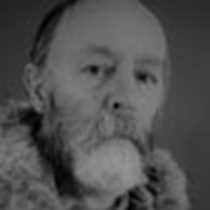Glencoe & Caledonian Canal, Scotland
After a peaceful night on the ship at rest in the Caledonian Canal we awoke to the same heavy skies and lowering clouds as last night – but with an air of optimism; blue patches were cracking through. Our coach trip after breakfast through the town of Fort William, along the shores of Lochaber and into Glencoe, brought us brightening sunshine and rising temperatures.
Fifty minutes later we were in Glencoe which looked dark and somber as we drove its curves to a high vantage point that allowed a sweeping vista of the entire length of the deeply carved glen. The towering mountains loomed heavy and misty in the morning air and a golden eagle could be seen soaring and searching while on the wing for some morsel below. The sudden arrival of a coach-load of tourists prompted us to break our reveries and head back down the valley to the National Trust for Scotland visitor centre some three miles back.
Here we found an excellent display on the geology, flora and fauna of the region along with an innovative presentation consisting of sound recordings of people who live in the area or who have been impacted by it in some way. Steve took some of us on a short walk away from the safety of the visitor centre and into the danger of the woods where we suspected the dreaded midge waited in ambush (unfortunately we were right!). Undeterred by the annoyances of the miniscule but large-fanged flying biters we gazed with some reverence and respect on the sad ruins of the house in which Glenlyon received his orders on February 12th 1692 to exterminate his hosts, the MacDonalds of Glencoe, the following morning. Surely the cruelest of Scotland’s many historical atrocities.
After lunch a group of would-be kayakers travelled by coach to the kayak pick-up point for a peaceful and scenic slow paddle towards the locks at Laggan where they would rejoin us. En route to Laggan Locks Konia gave a presentation on the many impressive lighthouses we have seen so far on our Scottish sojourn and made clear the importance of the “Lighthouse Stevensons,” kin of the author Robert Louis Stevenson, who in the 1850s were the prime architects and builders of these still-functioning navigational beacons.
The Lord of the Glens was locked overnight in Laggan Lock, a unique mooring experience if ever there was one, and after dinner we had the pleasure of walking the short distance from the ship to an old Dutch barge, moored slightly ahead of us in the canal. This is the “Eagle,” a floating pub and restaurant where “mien host” entertained us in his inimitable style as we enjoyed a glass of the finer, locally crafted ales. Tomorrow would be a new day of adventures, sights and experiences but the grey walls of Laggan Locks were our place of confinement for this last day of July.
After a peaceful night on the ship at rest in the Caledonian Canal we awoke to the same heavy skies and lowering clouds as last night – but with an air of optimism; blue patches were cracking through. Our coach trip after breakfast through the town of Fort William, along the shores of Lochaber and into Glencoe, brought us brightening sunshine and rising temperatures.
Fifty minutes later we were in Glencoe which looked dark and somber as we drove its curves to a high vantage point that allowed a sweeping vista of the entire length of the deeply carved glen. The towering mountains loomed heavy and misty in the morning air and a golden eagle could be seen soaring and searching while on the wing for some morsel below. The sudden arrival of a coach-load of tourists prompted us to break our reveries and head back down the valley to the National Trust for Scotland visitor centre some three miles back.
Here we found an excellent display on the geology, flora and fauna of the region along with an innovative presentation consisting of sound recordings of people who live in the area or who have been impacted by it in some way. Steve took some of us on a short walk away from the safety of the visitor centre and into the danger of the woods where we suspected the dreaded midge waited in ambush (unfortunately we were right!). Undeterred by the annoyances of the miniscule but large-fanged flying biters we gazed with some reverence and respect on the sad ruins of the house in which Glenlyon received his orders on February 12th 1692 to exterminate his hosts, the MacDonalds of Glencoe, the following morning. Surely the cruelest of Scotland’s many historical atrocities.
After lunch a group of would-be kayakers travelled by coach to the kayak pick-up point for a peaceful and scenic slow paddle towards the locks at Laggan where they would rejoin us. En route to Laggan Locks Konia gave a presentation on the many impressive lighthouses we have seen so far on our Scottish sojourn and made clear the importance of the “Lighthouse Stevensons,” kin of the author Robert Louis Stevenson, who in the 1850s were the prime architects and builders of these still-functioning navigational beacons.
The Lord of the Glens was locked overnight in Laggan Lock, a unique mooring experience if ever there was one, and after dinner we had the pleasure of walking the short distance from the ship to an old Dutch barge, moored slightly ahead of us in the canal. This is the “Eagle,” a floating pub and restaurant where “mien host” entertained us in his inimitable style as we enjoyed a glass of the finer, locally crafted ales. Tomorrow would be a new day of adventures, sights and experiences but the grey walls of Laggan Locks were our place of confinement for this last day of July.



